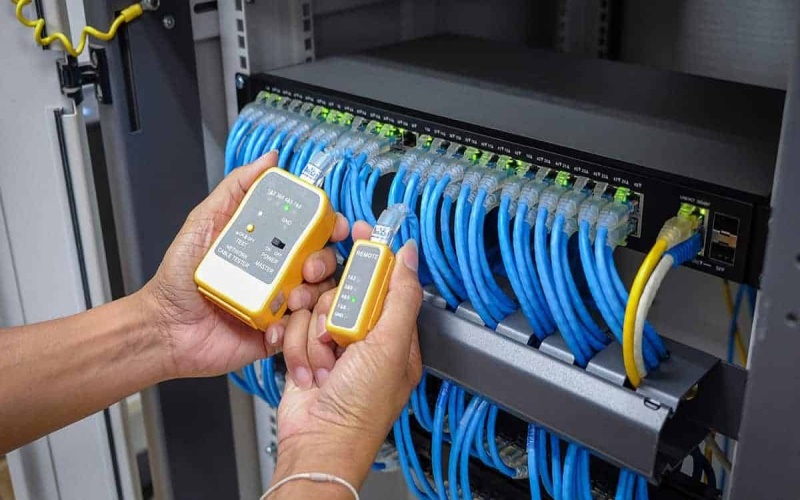With the ever-changing landscape of information technology, fast and effective network infrastructure is essential to support businesses’ operations. An integrated part of this infrastructure is structured cabling, which stands for a complex and systematic solution that serves as the main pillar within an interconnected setting. By breaking down the confusion surrounding structured cabling, this article attempts to offer a basic understanding of its principles, types, standards, and effective systems installation processes, as well as best practices.
The Fundamentals of Structured Cabling
Effective network cabling that works well is the foundation of any modern IT infrastructure used by an organization. It provides the base for data, voice, and video communication inside a building or campus. The main features of structured cabling include cables, connectors, distribution panels, and other hardware devices that support reliable information transfer. As we trace its path of evolution and growth, it becomes clear how structured cabling has grown from simple configurations to elaborate systems that cover the broad communication spectrums apparent today.
Structured cabling performs an essential function and allows the implementation of multiple communication technologies, from classical telephony to broadband data networks. Its flexibility and ability to scale means that it is something every business needs so as to remain relevant in the ever-changing world of digitization.
Types of Structured Cabling
Structured cabling comes in various forms to meet the diverse requirements of different applications. The three main types include:
- Copper-based cabling: Commonly used due to cost-saving and flexibility, copper cabling is a go-to solution for both small-scale and large-scope networks.
- Fiber optic cabling: Fiber Optic cabling is the preferred solution for high-performance networks due to its high bandwidth endurance against electromagnetic interference.
- Coaxial cabling: Though used sparingly in contemporary installations, coaxial cabling has various uses, like cable television and some data transmission setups.
Structured Cabling Standard
Standards in the industry are very important for establishing compatibility and uniformity when setting up structured cabling installations. The primary standardization bodies are the TIA/EIA and ISO /IEC. These standards are essential for a clear understanding of its implementation as cable infrastructure that is quite reliable and effective.
Effective Structured Cabling System
Structured cabling is the foundation of a modern, optimized network infrastructure. With businesses becoming more dependent on uninterrupted communication, the focus becomes all about understanding what exactly defines an efficient, structured cabling system. Here, we provide some insight into the planning, design, scalability, and future-proofing considerations addressing key elements that make a resilient and stable cabling infrastructure.
- Considerations for planning and layout: An effective plan is necessary for creating a structured cabling system that meets the present demands while providing room for potential development. Several features like cable routes, points distribution, and places where the equipment is located should be taken into consideration.
- Importance of scalability and future-proofing: Factoring in the rapidly developing technology, scalability is all important. A finely crafted structured cabling system should provide the necessary space for upgrades and changes without requiring total renovations.
Installation Process
A process of installation determines the success or failure of structured cabling. This phase is characterized by detailed planning, accurate execution, and a gradual process guaranteeing the smooth integration of cables, connectors, and hardware components.
- Step-by-step guide to structured cabling installation: A standard structured cabling setup requires careful planning, precise implementation, and detailed testing. From the laying of cables to connector termination, accuracy is needed at every stage.
- Common challenges and how to overcome them: Cable management, signal interference, or connectivity issues are some of the difficulties associated with installations. Realizing these threats and creating solutions is crucial for the success of installation.
- The significance of professional installation: Due to the intricacy of structured cabling systems, it is recommended that individuals who know how to design and install cables be hired. The risk of performance problems is minimized by professional installers making sure that the system cabling is properly implemented.
Structured cabling is known to have the following pros and cons
Structured cabling provides many benefits, namely increased reliability, scalability, and ease of maintenance. But it does have its challenges, which include the upfront cost and the need for professional installation. This understanding is crucial in effective decision-making when implementing structured cabling.
Cable Management Best Practices
Good cable management is the silent hero of a neat, effective workspace. Messy and knotted cables not only appear unattractive but also can trigger performance issues that might cause malfunctioning equipment and maintenance problems. It is crucial to analyze the significance of cable management best practices for a clean, functional, and efficient environment. It is the first step to making this type of environment where cables do not merely connect devices but also increase overall efficiency and beauty.
- Importance of regular maintenance: It is essential that periodic maintenance takes place to ensure the sustainability and efficiency of a structured cabling system.
- Common issues in structured cabling: Performances may be negatively affected by issues such as cable congestion, wrong labeling, and poor cabling management. Identifying and addressing these typical challenges results in a more trusted cabling infrastructure.
- Troubleshooting tips and techniques: Troubleshooting skills come in very handy when there are connectivity problems or performance degradation issues.
Wrapping Up
Ready to elevate your business’s connectivity and communication infrastructure? Choose JabberComm, a woman-owned HUB established in 1999. Their innovative cabling and phone systems empower businesses nationwide, ensuring agility and efficiency in data and communication networks. Partner with them and experience growth wherever your business ventures—Trust JabberComm, where evolving technologies meet dedicated telecom professionals committed to continuous learning. Elevate your connectivity with today.

